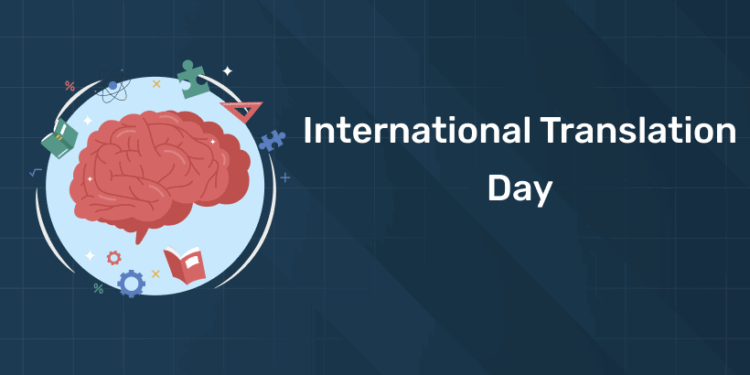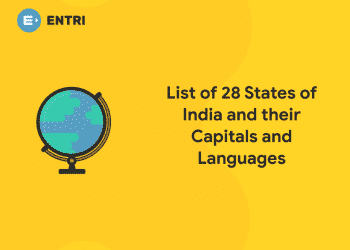Table of Contents
International Translation Day is celebrated every year on 30th September. This day is celebrated to display pride in a profession that is becoming increasingly essential in the era of progressing globalization. Also to bring awareness that languages play a vital role in development, in ensuring cultural diversity and intercultural dialogue, but also in attaining quality education for all and preserving cultural heritage.
Existence of translators have helped in understanding different cultures and works done by authors around the world and establish trades and peace within nations. Worldwide on this day the feast of St. Jerome is celebrated, who is the patron saint of translators. International Federation of Translators (FIT) set up in 1953, have been continuously promoting the idea to celebrate this day since the beginning of it’s establishment. The idea of an officially recognized International Translation Day was launched by FIT in the year 1991 to show solidarity of the translation community worldwide to promote the translation profession in different countries. Here, in this article we will discuss about history, activitities, Quiz & theme.
International Translation Day 2025 Date – September 30
In this article readers can get a glimpse on
- History and Activities of International Translation Day
- International Translation Day Theme 2025
- International Translation Day Quiz
International Translation Day 2025 – History
1: Who was the first woman President of India?
The United Nations General Assembly , adopted a resolution 71/288, on 24th May 2017 to celebrate 30th September as International Translation Day in order to recognize the role of language professionals in connecting nations and fostering peace, understanding and development. The day 30th September was so chosen that it is the feast of St. Jerome, who was a Bible translator and considered as the patron saint of translators.
St. Jerome was a priest from North-eastern Italy. He is known for translating most of the Bible into Latin from the Greek manuscripts of the New Testament. He also translated parts of the Hebrew Gospel into Greek. He was of Illyrian ancestry and his native tongue was the Illyrian dialect. Jerome died near Bethlehem on 30 September 420.
In 1991, International Federation of Translators (FIT) had launched an idea to officially celebrate International Translation Day to recognize the works & importance of translators.
Free UPSKILLING Courses!
Take your first step toward mastering in-demand skills, acing interviews, and securing top-tier jobs with Entri's free upskilling courses.
Start Learning!International Translation Day Theme 2025
The theme for International Translation Day 2025 is “Translation, shaping a future you can trust.”
This theme, set by the International Federation of Translators (FIT), emphasizes the critical role of human translators, interpreters, and terminologists in an increasingly complex world. It highlights how these professionals build dialogue and trust between different parties, especially in turbulent times, and ensure reliable communication. The theme also recognizes the vital oversight that human expertise provides in a landscape where AI-generated text and machine translation are becoming more prevalent.
International Translation Day Previous Themes
International Translation Day is observed annually on September 30. This day is a global celebration of the work of language professionals, including translators, interpreters, and terminologists. It commemorates the feast day of St. Jerome, the patron saint of translators. The International Federation of Translators (FIT) has been promoting this day since 1991, with the United Nations formally recognizing it in 2017.
Here are the themes from recent years as declared by FIT:
- 2015: “The Changing Face of Translation and Interpreting”
- 2016: “Connecting Worlds”
- 2017: “Translation and Diversity”
- 2018: “Translation: Promoting Cultural Heritage in Changing Times”
- 2019: “Translation and Indigenous Languages”
- 2020: “Finding the words for a world in crisis”
- 2021: “United in Translation”
- 2022: “A World Without Barriers”
- 2023: “Translation unveils the many faces of humanity”
- 2024: “Translation, an Art Worth Protecting: Moral and Material Rights for Indigenous Languages”
International Translation Day – Activities
Every year since 2005, the United Nations invites all its staff, and students from selected partner universities to compete in the UN St. Jerome Translation Contest. In this contest participants with best translations in Arabic, Chinese, English, French, Russian, Spanish, as well as German are rewarded. By organizing this event UN aims to celebrate multilingualism and highlight the important role of translators and other language professionals in multilateral diplomacy. The International Translation Day is usually celebrated around the world by organizing a series of dedicated events, seminars and symposiums.
Free UPSKILLING Courses!
Take your first step toward mastering in-demand skills, acing interviews, and securing top-tier jobs with Entri's free upskilling courses.
Start Learning!International Translation Day – Quotes
- “Translation is not a matter of words only: it is a matter of making intelligible whole culture – Anthony Burgess”
- “Without translation I would be limited to the borders of my own country. The translator is my most important ally. He introduces me to the world.” – Italo Calvino”
- “Translation is that which transforms everything so nothing changes – Gunther Grass”
- Translators are the shadow heroes of literature, the often forgotten instruments that make it possible for different cultures to talk to one another, who have enabled us to understand that we all, from every part of the world, live in one world.”- Paul Auster
- Writers make national literature, while translators make universal literature – Jose Saramago
- Translating from one language to another is the most delicate of intellectual exercises; compared to translation, all other puzzles, from bridge to crosswords, seem trivial and vulgar. To take a piece of Greek and put it in English without spilling a drop; what a nice skill! – Cyril Connolly
- The translator is a privileged writer who has the opportunity to rewrite masterpieces in their own language. – Javier Marías
International Translation Day Quiz 2025
1. When is International Translation Day celebrated?
A) September 21
B) September 25
C) September 30
2. Which organization officially recognized International Translation Day in 2017?
A) UNESCO
B) United Nations
C) European Union
3. International Translation Day is linked with the feast day of which saint?
A) Saint Jerome
B) Saint Augustine
C) Saint Francis
4. Saint Jerome translated the Bible into which language?
A) Greek
B) Hebrew
C) Latin
5. How many official languages does the United Nations currently have?
A) 4
B) 5
C) 6
6. Which is the most translated book in the world?
A) The Bible
B) The Quran
C) The Little Prince
7. Which children’s book ranks among the most translated globally?
A) Pinocchio
B) The Little Prince
C) Alice’s Adventures in Wonderland
8. Which federation represents translators, interpreters, and terminologists worldwide?
A) IFLA
B) FIT (Fédération Internationale des Traducteurs)
C) ITU
9. What is the main aim of International Translation Day?
A) To standardize world languages
B) To honor translators and promote cultural exchange
C) To eliminate language barriers by creating one language
Want More Engaging Questions?
Download our FREE PDF packed with insightful quiz questions to test your knowledge!
🔽 Click below to get your free copy now! 🔽
International Translation Day Quiz 2025 PDF
International Translation Day highlights the vital role of translators, interpreters, and language professionals. They enable communication across cultures and help preserve linguistic diversity. Their work ensures that knowledge, literature, and global agreements are accessible to everyone. Without translation, cultural exchange and international cooperation would be severely limited. Celebrating this day shows appreciation for their expertise and dedication.
Translation also strengthens understanding and harmony among nations. It bridges gaps between communities and fosters mutual respect. By promoting multilingualism, it supports education, diplomacy, and global dialogue. This day encourages everyone to value languages and the professionals who make cross-cultural communication possible. Ultimately, this day reminds us that language connects the world.
Free UPSKILLING Courses!
Take your first step toward mastering in-demand skills, acing interviews, and securing top-tier jobs with Entri's free upskilling courses.
Start Learning!Frequently Asked Questions
What is International Translation Day?
International Translation Day is celebrated every year on September 30. It honors translators, interpreters, and language professionals. The day recognizes their contribution to connecting cultures and enabling global communication. It also highlights the importance of multilingualism in today’s world. The United Nations officially recognized the day in 2017.
Why is September 30 chosen for International Translation Day?
September 30 is the feast day of Saint Jerome. He is known as the patron saint of translators. Saint Jerome translated the Bible into Latin, which became widely used. His work showed the power of translation in spreading knowledge. This makes the date highly symbolic for language professionals.
Who declared International Translation Day an official observance?
The United Nations officially declared International Translation Day in 2017. It was done through Resolution 71/288. The UN recognized the role of professional translation in peace and cooperation. The decision highlighted the need for accurate multilingual communication. It gave translators global recognition for their work.
What is the purpose of celebrating International Translation Day?
The main purpose is to honor translators and interpreters. It emphasizes their role in bridging cultural gaps. The day spreads awareness about language diversity worldwide. It also encourages respect for multilingualism in society. Overall, it shows that translation is essential for global understanding.
Who was Saint Jerome and why is he important?
Saint Jerome was a Christian scholar and translator. He lived in the 4th century. His most famous work is the Latin translation of the Bible. This translation is called the Vulgate. He is considered the patron saint of translators.
How many official languages does the United Nations use?
The United Nations has six official languages. These are English, French, Spanish, Russian, Arabic, and Chinese. Translators ensure all documents are available in each language. This guarantees equal access to information for member states. It also maintains fairness in global communication.
What role does translation play in global communication?
Translation makes knowledge accessible across language barriers. It allows people from different cultures to connect. International agreements rely on accurate translations for clarity. Literature and media also reach wider audiences through translation. Without it, global communication would be limited and unfair.
Which books are the most translated worldwide?
The Bible is the most translated book globally. It has been translated into thousands of languages. The Quran and The Little Prince also rank high in translations. Children’s classics like Pinocchio and Alice’s Adventures in Wonderland are widely translated too. These works show how translation spreads culture worldwide.
What is FIT and what does it do?
FIT stands for Fédération Internationale des Traducteurs. It is an international federation for translators and interpreters. FIT promotes cooperation among language professionals. It also organizes activities for International Translation Day. The organization raises awareness of the importance of translation globally.
Why is translation important for cultural exchange?
Translation opens doors to new ideas and traditions. It allows literature, films, and knowledge to cross borders. Cultures become more connected and understood through shared works. It reduces barriers caused by language differences. In this way, translation supports global harmony and cooperation.













